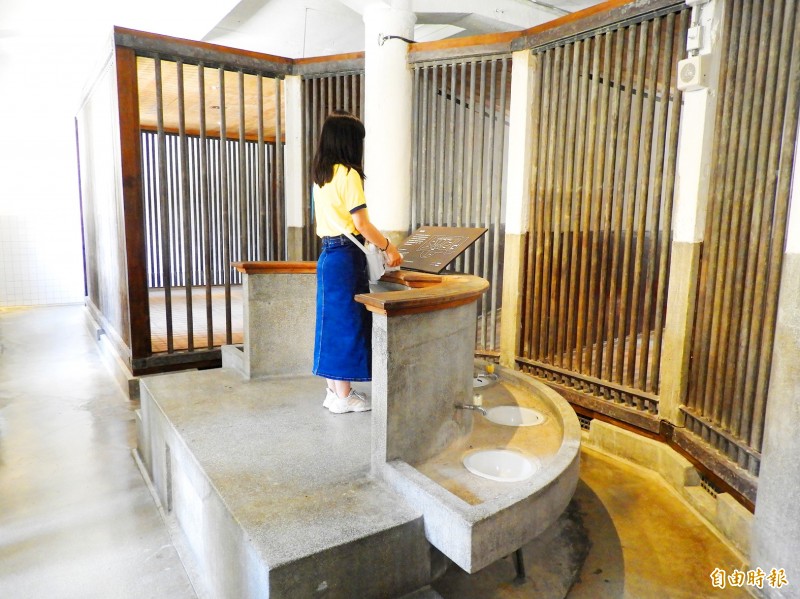《TAIPEI TIMES》 Commission takes people on tour of White Terror-era holding, torture sites

A woman during a tour led by the Transitional Justice Commission yesterday stands at a monitoring podium at a former Investigation Bureau detention center in Taipei to see how guards could watch all the prisoners at once. Photo: Chen Yu-fu, Taipei Times
By Chen Yu-fu and William Hetherington / Staff reporter, with staff writer
The Transitional Justice Commission yesterday took members of the public on a guided tour of sites where political prisoners were held and tortured during the White Terror era.
Among the sites visited was a facility where the government used to torture political prisoners to extract confessions from them.
In the 1950s, the Ministry of Justice’s Investigation Bureau established a detention center in Taipei’s Dalongdong District (大龍峒) near the district’s Baoan Temple (保安宮), the commission said, adding that the original site has been converted into a residential building.
Chang Wei-hsiu (張維修), who researches historical sites related to the Martial Law period, said that records related to the Dalongdong detention center were destroyed, and researchers have had to rely on testimonies from victims for much of the information they have about the site, including its location.
The Investigation Bureau appeared to have chosen the site of the facility — a one-story building — because of its location at the fringe of the city, he said.
Later the bureau established a larger facility on Xinyi District’s (信義) Wuxing Street, and then subsequently the even larger Ankang Guesthouse (安康接待室) detention center in New Taipei City’s Sindian District (新店), he said.
The former Counterintelligence Bureau — known more commonly as the “secrecy bureau” (保密局) — established a separate facility at 46 Yining St in Taipei’s Datong District (大同), where today there is a residential complex, he said.
The site was originally the location of the Koo family’s Kaosha Iron Foundry Co, but was confiscated by the Chinese Nationalist Party (KMT) government after it accused foundry owner Koo Yen Pi-hsia (辜顏碧霞) of funding communist revolutionary and novelist Lu Ho-jo (呂赫若). Only a small portion of the site remains today.
Another detention center at 28 Liangzhou St in Taipei was later demolished and replaced with a parking lot.
In 1919, the site had been confiscated from a private owner by the Japanese government, turned into a hospital and, after the KMT arrived in Taiwan, was taken over as the headquarters of the military police.
Numerous people were executed there by the military police after the 228 Incident, Chang said.
From the 1960s to 1991 the building was used by the now-defunct Planning and Research Commission for Reconquering the Mainland, after which the property was handed over to First Commercial Bank, which demolished it, he said.
The most intact site remaining from the White Terror era is the Taiwan New Cultural Movement Memorial Hall, which formerly served as the site of the police headquarters during the Japanese colonial era, and as a police office after the KMT’s arrival, he said.
新聞來源:TAIPEI TIMES
















